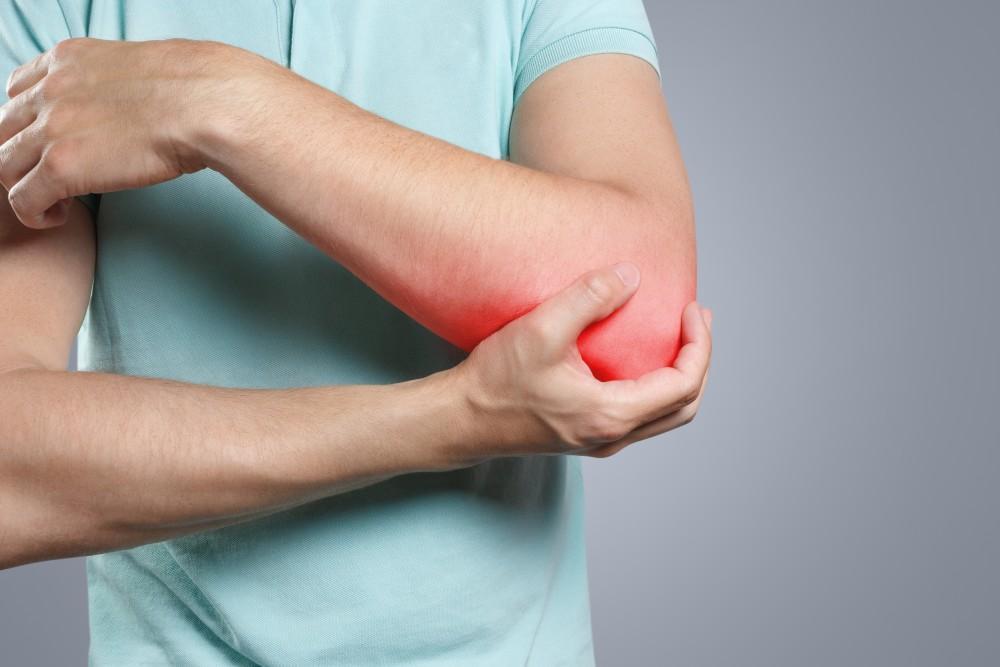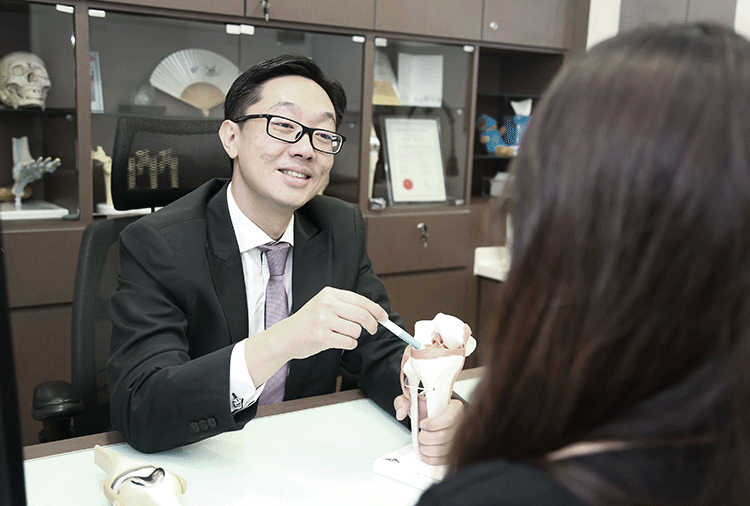Tendonitis is a common condition that can affect people of all ages and activity levels. It involves inflammation or irritation of a tendon, the thick fibrous cords that attach muscles to bones.
What Is Tendonitis, And Why Is Treatment Important?
Tendonitis is the inflammation of a tendon, often resulting from repetitive motion or overuse, leading to pain and tenderness near the affected joint. Commonly affected areas include the shoulders, elbows, wrists, knees, and heels. Treatment is crucial because it helps alleviate pain, reduces inflammation, and prevents further damage.
Without proper treatment, tendonitis can become a chronic issue, leading to reduced mobility and function, impacting daily activities and overall quality of life. Early intervention and appropriate management are key to a full recovery and the prevention of recurring problems.
What Are The Causes And Risk Factors Of Tendonitis?
Causes
- Repetitive Motion – Engaging in repetitive activities, such as typing, painting, or playing musical instruments, can strain tendons and lead to inflammation.
- Overuse – Overuse of a tendon without adequate rest, especially in sports or physical activities like running, swimming, or throwing, can cause tendonitis.
- Injury – Direct trauma or sudden injury to a tendon can result in inflammation and tendonitis.
- Improper Technique – Using incorrect techniques during physical activities or exercises can place additional stress on tendons.
- Age – Tendons become less flexible and more prone to injury with age, increasing the risk of tendonitis.
Risk Factors:
- Age – Older adults are more likely to develop tendonitis due to decreased tendon elasticity.
- Occupation – Jobs that involve repetitive motions or heavy lifting, such as construction work, painting, or manual labour, increase the risk of tendonitis.
- Sports Participation – Athletes involved in sports that require repetitive motions, such as tennis, golf, baseball, and basketball, are at higher risk.
- Poor Conditioning – Lack of proper conditioning and stretching before physical activity can increase susceptibility to tendonitis.
- Health Conditions – Certain conditions, such as rheumatoid arthritis, gout, and diabetes, can predispose individuals to tendon inflammation.
- Improper Equipment – Using equipment that is not suited to one’s physical condition or using it incorrectly can increase the risk of tendonitis.
What Are The Common Symptoms Of Tendonitis?
Tendonitis manifests through various symptoms that can significantly impact daily activities and athletic performance. Recognising these symptoms early is essential for seeking appropriate treatment and preventing further complications.
- Pain – The most common symptom, pain is typically localised to the affected tendon and may worsen with movement or activity.
- Tenderness – The area around the inflamed tendon is often tender to the touch.
- Swelling – Swelling may occur around the affected tendon, making the area appear larger and more sensitive.
- Stiffness – Movement in the affected joint may become limited, resulting in stiffness and difficulty performing everyday tasks.
- Heat and Redness – The skin over the inflamed tendon may feel warm and appear red, indicating inflammation.
- Crackling Sensation – A crackling or grating sensation (crepitus) may be felt when moving the affected tendon.
How Is Tendonitis Diagnosed?
Accurate diagnosis is essential for appropriate treatment and recovery. The diagnostic process involves a comprehensive clinical examination and various diagnostic tests to assess the extent of inflammation and rule out other potential conditions.
Clinical Examination
- Medical History – The doctor will inquire about the patient’s symptoms, including the onset, duration, and nature of the pain, as well as any recent activities or injuries that might have contributed to the condition.
- Visual Inspection – The affected area will be inspected for signs of swelling, redness, or deformity. Observing the patient’s posture and movement may provide additional clues.
- Palpation – The doctor will gently press on the tendon to check for tenderness, swelling, or warmth. This helps pinpoint the exact location of the inflammation and assess the degree of discomfort.
- Range of Motion – The doctor will evaluate the range of motion of the affected joint or limb. Pain or limited movement during certain actions can indicate tendonitis.
- Functional Tests – Specific tests may be performed to assess pain levels and functional limitations. These might include resisted movements or stretching exercises to determine how the tendon responds to various stresses.
Diagnostic Tests
- Ultrasound – Ultrasound imaging provides real-time images of the tendon, allowing visualisation of inflammation, thickening, or tears. It helps confirm the diagnosis and assess the severity of the condition.
- MRI – Magnetic Resonance Imaging (MRI) offers detailed images of the soft tissues, including tendons and surrounding structures. It is useful for evaluating tendon damage, including partial or complete tears, and any associated inflammation.
- X-rays – X-rays are typically used to rule out bone abnormalities or conditions that might mimic tendonitis symptoms, such as fractures or bone spurs. They do not directly show tendons but can help identify related issues.
- CT Scan – A Computed Tomography (CT) scan may be used in some cases to provide detailed cross-sectional images of the tendon and surrounding tissues, especially if there is suspicion of complex structural damage.
- Blood Tests – Blood tests might be ordered to check for markers of inflammation or underlying conditions, such as rheumatoid arthritis or infection, that could contribute to tendonitis symptoms.
What Are The Tendonitis Treatment Options?
Tendonitis is an inflammation or irritation of a tendon, which connects muscles to bones. Treatment aims to alleviate pain, reduce inflammation, and restore tendon function. Options vary depending on the severity and location of the tendonitis, but generally include:
Rest and Activity Modification:
- Rest – Avoid activities that exacerbate symptoms to give the affected tendon time to heal.
- Activity Modification – Modify or avoid repetitive motions and activities that stress the affected tendon.
Ice Therapy:
- Application – Apply an ice pack to the affected area for 15-20 minutes several times a day to reduce swelling and numb pain.
Medications:
- Nonsteroidal Anti-Inflammatory Drugs (NSAIDs) – Over-the-counter NSAIDs like ibuprofen or naproxen can help reduce pain and inflammation.
- Acetaminophen – Provides pain relief if NSAIDs are not suitable.
- Corticosteroids – Oral or injected corticosteroids may be prescribed for severe inflammation or if other treatments are ineffective.
Physical Therapy:
- Exercises – A physical therapist can design exercises to strengthen the muscles around the affected tendon, improve flexibility, and reduce strain.
- Stretching and Strengthening – Specific stretches and strengthening exercises can help alleviate symptoms and prevent future episodes.
Bracing and Support:
- Braces – Using a brace or support can help reduce strain on the affected tendon by immobilising the area and preventing movements that might aggravate the condition.
- Splints – For some tendinitis conditions, a splint may be used to limit movement and provide rest to the affected tendon.
Manual Therapy:
- Massage Therapy – Gentle massage techniques can help relieve muscle tension and improve blood flow to the affected area.
- Stretching Techniques – Manual stretching can address tightness and improve flexibility around the affected tendon.
Injections:
- Corticosteroid Injections – Corticosteroids can be injected directly into the tendon or surrounding area to reduce inflammation and pain.
- Platelet-Rich Plasma (PRP) Injections – PRP therapy involves injecting a concentration of platelets from the patient’s own blood to promote healing and tissue repair.
Extracorporeal Shock Wave Therapy (ESWT):
- Procedure – ESWT uses sound waves to stimulate healing in the affected tendon. This non-invasive treatment can help reduce pain and promote tendon repair.
Surgery:
- Indications – Surgery may be considered for chronic or severe cases of tendonitis that do not respond to conservative treatments.
- Procedure – Surgical options can include removing degenerated tissue or repairing the damaged tendon. This is typically considered only after other treatments have been exhausted.
Lifestyle and Ergonomic Adjustments:
- Technique Modification – Adjusting techniques in sports or activities that stress the tendon can prevent further injury. Working with a coach or therapist to correct form can be beneficial.
- Equipment Adjustment – Using proper equipment and ergonomically designed tools can help reduce strain on the affected tendon.
What Are The Tendonitis Treatment Options?
Tendonitis can occur in various parts of the body, such as the shoulders, elbows, wrists, knees, and ankles. Effective prevention strategies aim to reduce inflammation, promote healing, and prevent recurrence. Here are some strategies:
- Always perform a thorough warm-up before engaging in physical activity to prepare the muscles and tendons for movement. Likewise, cool down and stretch after activity to prevent stiffness and reduce the risk of injury.
- Incorporate exercises that strengthen the muscles around the tendons into your regular fitness routine. Strong muscles provide better support and reduce strain on the tendons.
- Regularly perform stretching exercises to maintain flexibility in the muscles and tendons. Include stretches for the major muscle groups to reduce tension and improve joint mobility.
- Use proper techniques and body mechanics during physical activities to reduce strain on the tendons. Seek guidance from a coach or trainer if needed to ensure correct form.
- Make ergonomic adjustments at work and home to reduce repetitive strain on the tendons. Use ergonomic tools, adjust the height of workstations, and take frequent breaks to avoid overuse injuries.
- Avoid overtraining and allow adequate rest and recovery between workouts. Overuse and repetitive strain can increase the risk of tendonitis. Listen to your body and take breaks when needed.
- Incorporate a variety of activities into your fitness routine to reduce repetitive strain on specific tendons. Engage in low-impact activities such as swimming, cycling, or yoga.
- Wear shoes that provide adequate support and cushioning for the feet and joints. Replace worn-out shoes regularly to maintain proper support and reduce the risk of tendon injuries.
- Maintain a healthy lifestyle by eating a balanced diet, staying hydrated, getting enough sleep, and managing stress. These factors contribute to overall musculoskeletal health and reduce the risk of tendon injuries.
- Schedule regular check-ups with a healthcare professional to monitor tendon health and address any underlying issues that may contribute to tendonitis. Early detection and intervention can help prevent progression and improve treatment outcomes.






